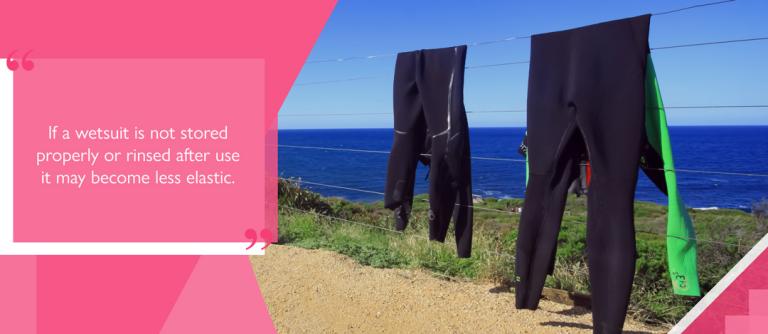Wetsuits are worn in all conditions for different water sports and activities. They insulate the body against cold temperatures, improve buoyancy and protect against abrasions and UV rays.
How a wetsuit should fit
The material used to construct a wetsuit must stretch for comfort and movement. While it should feel like a second skin, a wetsuit should never restrict movement or breathing.
Whenever a wetsuit is put on or taken off, the material will stretch a little, particularly around the shoulders and legs. Pull with care to avoid overstretching or tearing.

How wetsuits accommodate and protect the wearer
Your . The better the fit, the more responsive it will be to your body, and the better it will insulate.
Should the wetsuit fit poorly, water that should be trapped will leak out (flush) through the suit, negating any insulation. A close fit holds the insulating layer in place. In order to fit closely, the material must be able to stretch.
Elasticity of wetsuit materials
Neoprene is a type of synthetic rubber. It contains air pockets within the material which improve buoyancy and insulation.
The amount by which a wetsuit will stretch depends on the type of neoprene and mix of materials. However, all neoprene has some level of flexibility.
Thicker wetsuits tend to provide more insulation. However, they are also more restrictive as the bulky material stretches less.
Different types of neoprene can be used to meet different needs. Super stretch neoprene is designed for flexibility, reinforced neoprene for durability, and smooth skin or nylon lining mixes for better insulation.

How wetsuit fit affects the amount a wetsuit will stretch
If a wetsuit is too small, the fabric’s elasticity will be maxed out when adapting to your body, making it less flexible. If it’s too big, the material will not contort as much as you may want it to. Trying to fix a poor fit by stretching your wetsuit will reduce its effectiveness and possibly cause damage.
To break in a wetsuit, wear it while performing pre-activity stretches, either when wet or dry. This will gently stretch the neoprene and move the wetsuit into place on your body.
Fit and stretch preference will vary by wearer, and may depend on what the wetsuit is being worn for. Open water swimming requires more flexibility than deep sea diving. However, the latter will likely require a thicker wetsuit for extra warmth.
Wetsuits stretch more when wet
Because water loosens neoprene, wetsuits stretch more once wet. The first time you wear a wetsuit, or wear it again once fully dried, it will have less give until moistened again.
Soaking in warm water can loosen the fabric, but this can also reduce overall elasticity over the long term.

Storing your wetsuit to prevent unwanted stretching
If a wetsuit is not stored properly or rinsed after use it may become less elastic over time, as the material and seams may become compromised. Correct wetsuit care will help protect against damage from saltwater, mould, and bacteria, prolonging its useful life.
Finding a comfortable wetsuit
Wetsuits from Two Bare Feet are designed with comfort and functionality as a priority. Our range covers a broad variety of uses, from thick winter wetsuits through to summer shorty wetsuits that offer more flexibility and less insulation.
For additional insulation and protection, we also provide a selection of wetsuit accessories, including thermal rash vests, gloves, and hoods.




